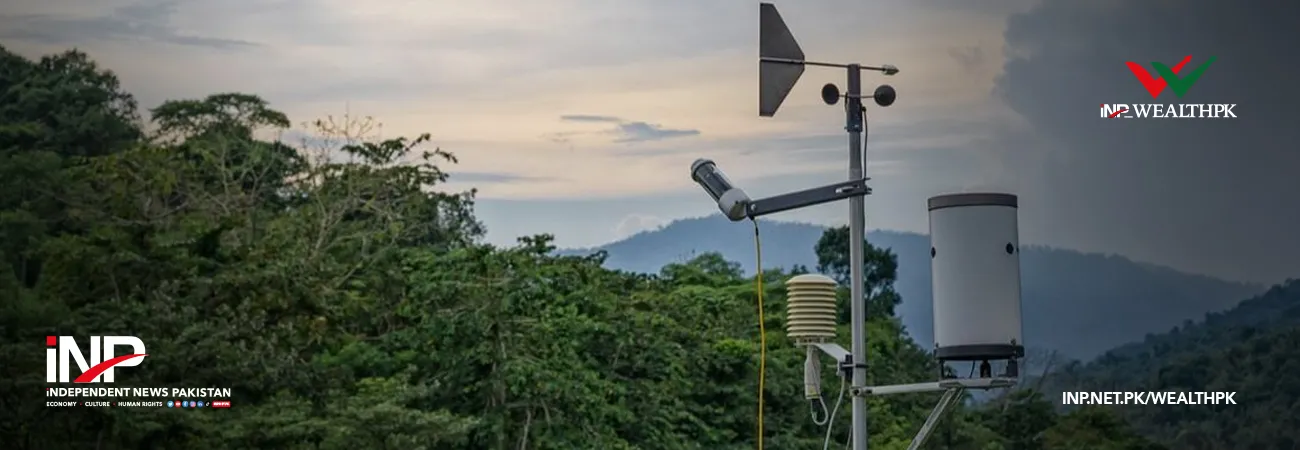INP-WealthPk
Ayesha Saba
Pakistan’s fiscal position strengthened during fiscal year 2024-25 as record profits of the State Bank of Pakistan (SBP), coupled with prudent debt management and lower borrowing costs, helped the government narrow its deficit and ease the strain on public finances. The State Bank’s Annual Report 2024-25 noted that the improvement reflected a combination of policy consistency, effective coordination between fiscal and monetary authorities, and the country’s return to macroeconomic stability after several challenging years.

According to the report, the SBP transferred its highest-ever profit to the federal government during the year, becoming a key contributor to non-tax revenues. The central bank’s earnings rose significantly due to higher returns on its foreign-exchange reserves, income from open-market operations, and improved management of its domestic asset portfolio. These profits, together with strong revenue growth and better expenditure discipline, enabled the government to post a fiscal deficit of 5.4 percent of GDP - the lowest in nine years. The primary balance recorded a surplus of 2.4 percent of GDP, well above the target agreed with the International Monetary Fund, which the SBP said was “a notable achievement in Pakistan’s fiscal consolidation efforts.”
The improvement in the fiscal position also stemmed from better debt management. The report observed that during FY25 the government took several steps to lengthen the maturity profile of public debt, reduce refinancing risks, and lower interest costs. It increasingly relied on long-term instruments such as Pakistan Investment Bonds and Islamic Sukuk, while reducing dependence on short-term treasury bills. As a result, the share of long-term debt in total domestic debt increased, helping improve debt sustainability indicators. The weighted average cost of borrowing declined as market expectations for interest rates eased amid falling inflation and stable exchange rates.
The report stated that Pakistan’s public debt-to-GDP ratio stood at 70.8 percent by the end of FY25, slightly higher than the previous year, mainly because of slower nominal GDP growth. However, the composition of debt improved significantly, with a lower share of foreign-currency liabilities and a higher share of concessional and fixed-rate instruments. The SBP said that this shift reduced the economy’s vulnerability to exchange-rate fluctuations and global interest-rate volatility. It added that “debt sustainability indicators have strengthened as fiscal consolidation, monetary easing, and external stability combined to reduce rollover risks.”
A major factor that supported fiscal gains was the decline in interest payments, which had previously consumed a large portion of budgetary resources. With inflation easing and the policy rate cut from 20.5 percent to 11 percent by January 2025, debt-servicing costs declined sharply. This allowed the government to allocate more funds to development spending, particularly at the provincial level. The SBP observed that increased development outlays on infrastructure, transport, and social sectors boosted economic activity and employment while maintaining fiscal discipline.
The report also highlighted the importance of strong non-tax revenues in offsetting revenue shortfalls elsewhere. In addition to SBP profits, petroleum levies and dividends from public enterprises contributed to revenue growth. The central bank emphasized that “the quality of fiscal adjustment has improved, as the composition of revenues and expenditures has shifted toward more sustainable sources and productive uses.” It further noted that provincial fiscal positions also improved, with several provinces achieving surpluses that supported the federal fiscal framework.
Despite these gains, the SBP cautioned that Pakistan’s public finances remain under structural pressure from narrow tax bases, large subsidies, and inefficiencies in state-owned enterprises. The report stressed the need to broaden the tax net, rationalize expenditures, and reform loss-making public entities to ensure long-term sustainability. It also advised that fiscal consolidation should continue in tandem with growth-supportive policies to prevent austerity from undermining development progress.
The central bank reiterated that better debt management must remain a priority. It recommended expanding the domestic investor base for government securities, improving secondary-market liquidity, and strengthening coordination between debt management and monetary policy operations. The SBP pointed out that recent reforms, including the publication of quarterly debt bulletins and adoption of a medium-term debt management strategy, have enhanced transparency and investor confidence.
The report credited the fiscal improvement to a broader macroeconomic turnaround. Lower inflation, external-sector stability, and a surplus in the current account collectively reduced financing pressures on the government. With foreign reserves rising to US$14.5 billion and the exchange rate stabilizing, the need for large-scale external borrowing diminished. The improved balance-of-payments position allowed the government to manage external debt repayments more smoothly and to negotiate better terms for new concessional loans.
The SBP’s analysis underscored that the fiscal gains achieved in FY25 represented the outcome of difficult but necessary policy adjustments. It said that the government’s decision to rationalize untargeted subsidies, enhance documentation of the economy, and prioritize long-term borrowing over short-term financing were decisive steps in restoring fiscal discipline. However, it warned that maintaining these achievements would require continuity of policy and strong institutional capacity.
The report concluded that Pakistan’s fiscal outlook for FY26 remains broadly positive, with the deficit projected to decline further, provided the authorities continue their commitment to reform. It stressed that fiscal sustainability, supported by a stronger central bank balance sheet and effective debt management, forms the cornerstone of Pakistan’s recent stabilization success. “The strengthening of public finances through higher SBP profits and prudent debt operations demonstrates that fiscal and monetary policies can complement each other in building macroeconomic resilience,” the report said.
Credit: INP-WealthPk













